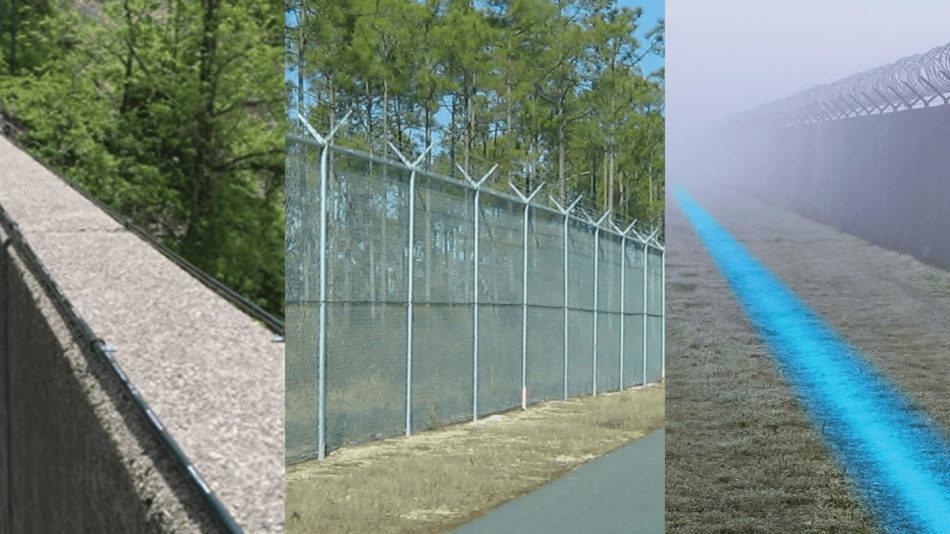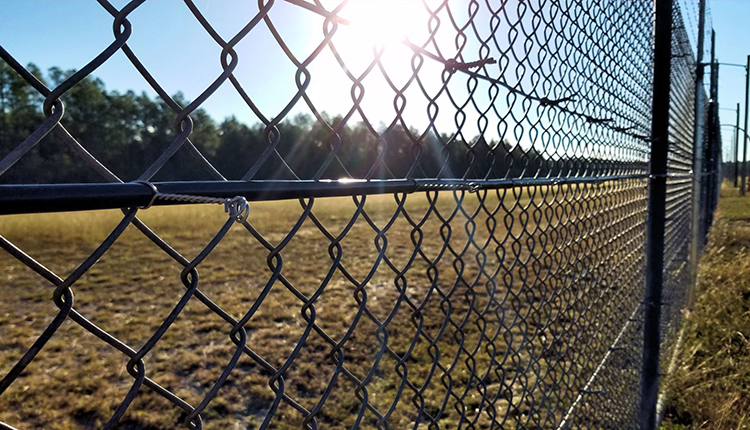The Ultimate Guide to Fiber Optic Safety And Security Equipments for Your Company
In an age where security issues are critical for organizations, comprehending the intricacies of fiber optic technology can be transformative. This overview describes how incorporating fiber optic safety and security systems not only boosts information protection but likewise uses advantages like resistance to interference and real-time surveillance abilities.
Comprehending Fiber Optic Modern Technology

The core of a fiber optic wire includes a thin glass or plastic facility, surrounded by a cladding layer that reflects light back right into the core. fiber optic security system. This style makes certain marginal loss of signal strength, also over extensive distances. There are 2 key kinds of fiber optic wires: single-mode and multi-mode. Single-mode fibers are designed for long-distance transmission, while multi-mode fibers are suitable for shorter ranges, often utilized within structures.
Fiber optics are not just quicker however likewise much more safe and secure than conventional circuitry. Their inherent resistance to electromagnetic disturbance and the difficulty of touching into the signal without detection make them a recommended option for services focusing on data integrity and safety and security. As companies significantly depend on protected and efficient communication systems, recognizing fiber optic technology comes to be crucial for informed decision-making.
Key Advantages of Fiber Optic Safety
When considering security options for a business, the advantages of fiber optic systems are particularly compelling. Fiber optic modern technology uses exceptional data transmission rates and bandwidth capability, making it excellent for managing high-resolution video clip feeds from security electronic cameras. This capability ensures that protection workers get real-time data, boosting overall response times to possible protection hazards.
Furthermore, fiber optic cords are inherently immune to electro-magnetic disturbance, which can compromise the honesty of conventional copper-based systems. This resistance makes sure that the data transferred remains safe and uninterrupted, giving an extra trusted safety and security facilities. Furthermore, optical fiber are less vulnerable to physical damages, as they are made from glass instead of metal, reducing upkeep expenses and downtime.
Fiber optic systems offer boosted cybersecurity attributes, consisting of encryption capabilities that shield sensitive information from unauthorized access. Jointly, these benefits make fiber optic safety and security systems a robust option for companies looking for to boost their security procedures.
Installation Process and Considerations
Considering the complexities involved, the setup process of fiber optic protection systems requires careful preparation and execution. The first step entails an extensive website analysis to identify optimum areas for cabling and tools. This assessment should consider ecological aspects, existing facilities, and potential susceptabilities.

Furthermore, the setup needs to abide by regional building regulations and industry standards. This may consist of coordinating with various stakeholders such as structure managers, IT groups, and security personnel to make certain smooth integration with existing systems.
Post-installation, strenuous screening is necessary to verify system efficiency and identify any kind of concerns that may arise. By prioritizing these factors to consider throughout the setup process, companies can make certain a durable and efficient fiber optic security system that meets their certain security demands.
Most Current Developments in Fiber Optic Safety And Security
Current advancements in fiber optic innovation have site here actually considerably boosted the capabilities of protection systems for businesses. Among one of the most notable innovations is the assimilation of fiber optic sensing units that can spot vibrations and intrusions along the perimeter of a facility. These sensing units offer real-time monitoring, making it possible for rapid feedback to possible breaches.
Additionally, the advancement of distributed fiber optic sensing innovation permits the continuous tracking of big areas with a single fiber cable television. This method not just reduces installation prices however also boosts the reliability of keeping track of systems by removing the requirement for numerous, separate sensors.
In click resources addition, improvements in multiplexing techniques have made it possible for services to transmit large quantities of information over fiber optic networks, improving the abilities of video clip surveillance systems. High-definition video feeds can currently be sent over lengthy ranges without loss of quality, ensuring that protection personnel have access to clear and actionable details.
Lastly, using expert system (AI) together with fiber optic systems is transforming hazard detection. AI formulas can assess information from fiber optic networks to identify uncommon patterns or habits, enabling proactive safety actions. These advancements collectively stand for a considerable leap onward in fiber optic safety and security innovation.
Selecting the Right System for Your Organization
Choosing the proper fiber optic protection system for your business is important for ensuring optimal protection and comfort. To make an informed selection, examine your details protection needs, taking into consideration variables such as the size of your facilities, the nature of your operations, and potential vulnerabilities.
Begin by reviewing the level of protection needed; as an example, risky settings might demand sophisticated systems with incorporated surveillance and breach detection capacities. Next, consider scalability; as your company grows, your security system should be capable of increasing to accommodate raised needs without significant overhauls.
In addition, examine the dependability and efficiency of various systems. Search for suppliers with well-known track records and consumer reviews that vouch for their service quality. It's also suggested to ask about the modern technology's compatibility with existing facilities, guaranteeing a seamless assimilation process.
Final Thought
In verdict, fiber optic safety and security systems provide a durable service for improving business security frameworks. The integration of high-speed information transmission, resistance to electro-magnetic disturbance, and progressed tracking capacities considerably improves total security (fiber optic security system). By recognizing the modern technology, identifying its advantages, and taking into consideration the setup procedure, companies can make enlightened choices. The most recent innovations better strengthen the efficiency of these systems, making sure that companies remain protected and adaptable in an ever-evolving risk landscape.
Comments on “Why You Should Choose of a Fiber Optic Security System for Next-Generation Security Solutions”